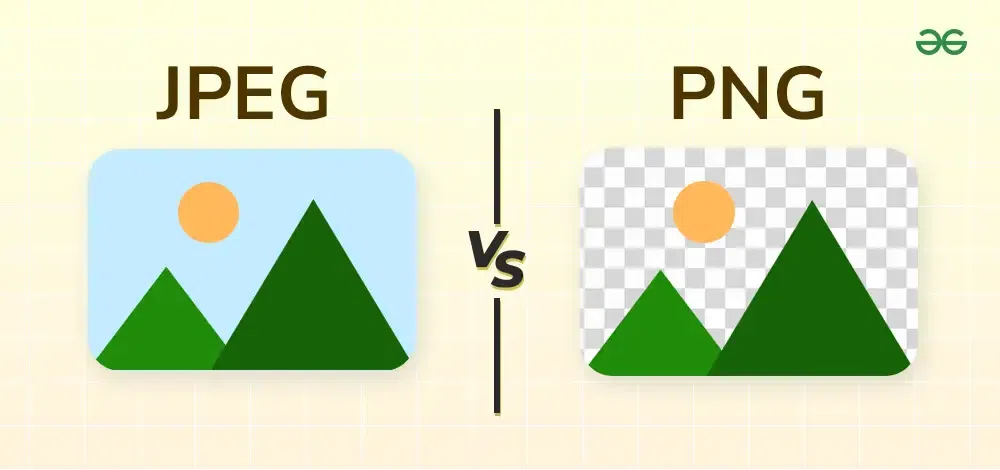What is a JPEG?
JPEG a popular image format that uses lossy compression to reduce file size while retaining good image quality. A JPEG (or JPG) stands for Joint Photographic Experts Group, which is the name of the committee that created the standard.

Classic Uses for JPEG
Photographs: Ideal for storing and sharing photos with rich colors and details.
Web Graphics: Frequently used for web images due to smaller file size and fast loading times.
Email Attachments: Compact file size makes it easy to send images via email.
What are the pro’s to using JPEG on my Website?
Compression: JPEG uses lossy compression, meaning it reduces the file size by selectively discarding some of the image data (Hence “lossy”). This can result in a smaller file size with minimal visible loss in quality, which in turn makes loading quicker.
Color Depth: JPEG supports 24-bit color, which translates to over 16 million colors. This makes it ideal for photographs and images with complex color gradients.
Wide Compatibility: JPEG is widely supported across various devices, software, and platforms, making it a versatile choice for sharing and displaying images.
Quality Settings: When saving a JPEG file, you can usually adjust the quality setting. Higher quality means less compression and larger file size, while lower quality means more compression and smaller file size.
SEO Benefits: Faster loading times can contribute to better search engine rankings. Since JPEG files are smaller and load faster, they can help improve the overall SEO performance of a photography blog.
Storage Efficiency: With a large number of images, the storage space on the server can become a concern. JPEG files, being smaller, require less storage space, making it more cost-effective to manage and backup the website’s content.
Are there any Cons to Using JPEG?
Even though JPEG has it’s advantages, there are still some drawbacks that may cause you to use a PNG instead.
Lossy Compression: The thing that makes JPEG a go-to choice could also be a reason not to use it.
Lack of Transparency: JPEG does not support transparent backgrounds, which can limit its use for certain types of images, such as logos, icons, and other graphics that require transparency.
Artifacts: Due to its compression method, JPEG images can sometimes show compression artifacts, especially at lower quality settings. These artifacts can appear as blocky or blurry areas in the image.
Limited Color Range: Although JPEG supports 24-bit color, it does not support higher bit depths or alpha channels. This means that it may not be the best choice for images that require very fine color detail or transparency.
File Size Variability: While JPEGs are generally smaller than PNGs, the file size can vary greatly depending on the compression level and the image’s content. Some highly detailed or complex images may not compress as well as simpler ones.
Quality Degradation: Repeatedly editing and saving JPEG files can lead to cumulative quality loss. Each time a JPEG is saved, it undergoes compression, which can degrade the image quality over time.
These cons can be mitigated by using JPEG for the right types of images and maintaining a balance between quality and compression. For images that require transparency, high detail, or lossless quality, PNG or other formats might be more suitable; Or if the image contains text, sharp lines, or require lossless quality, PNG’s lossless compression ensures that no detail is lost. If the utmost image quality is needed without any data loss, PNG is the way to go.
JPEG vs PNG Use Scenarios

JPEG
- Travel Blog Photos: If you run a travel blog, you likely have a lot of photos of landscapes, cityscapes, and people. JPEG’s lossy compression will reduce the file sizes significantly, allowing your site to load quickly while still presenting high-quality images.
- Online Portfolios: Photographers and artists showcasing their work online can use JPEG for their galleries. The smaller file sizes mean faster load times, which can improve user experience and keep visitors engaged.
- E-commerce Product Images: For online stores, product photos are essential. JPEGs can display products with vibrant colors and clear details without taking up too much bandwidth, which is crucial for sites with many images.
PNG
- Company Logos: If you need to display your company logo on different backgrounds (like different sections of a website or marketing materials), PNG’s support for transparent backgrounds ensures that your logo looks crisp and clean.
- Infographics and Charts: For educational content or data presentation, PNG is perfect. The lossless compression keeps text and graphical details sharp, making it easier for viewers to read and understand the information.
- Web Design Elements: Icons, buttons, and other interface elements often require transparency. PNGs allow for these design elements to be placed seamlessly over various backgrounds without any visual artifacts.
Example Scenarios
- Scenario 1: A recipe blog features step-by-step photos of cooking processes. Since these photos contain lots of detail but don’t require transparency, JPEG is ideal to keep the pages loading swiftly.
- Scenario 2: A tech blog includes screenshots of software interfaces. Here, PNG is the way to go because it preserves the quality of the text and interface elements, ensuring readers can clearly see the details.
- Scenario 3: An online fashion boutique showcases its new collection. Product photos (JPEG) can quickly load, while the boutique’s logo and promotional banners with transparent elements (PNG) maintain a professional look.
In summary:
JPEG is an incredibly versatile image format that offers numerous benefits, particularly for web use. Its efficient compression and wide compatibility make it ideal for photographs and various online applications. However, it’s essential to balance quality and compression to avoid artifacts and degradation. While JPEG is perfect for photos, PNG should be your go-to for images requiring transparency or high detail. Understanding these differences ensures that your website not only looks great but also loads quickly and performs well. By leveraging the strengths of both formats, you can optimize your images to enhance user experience and improved SEO results.


No responses yet